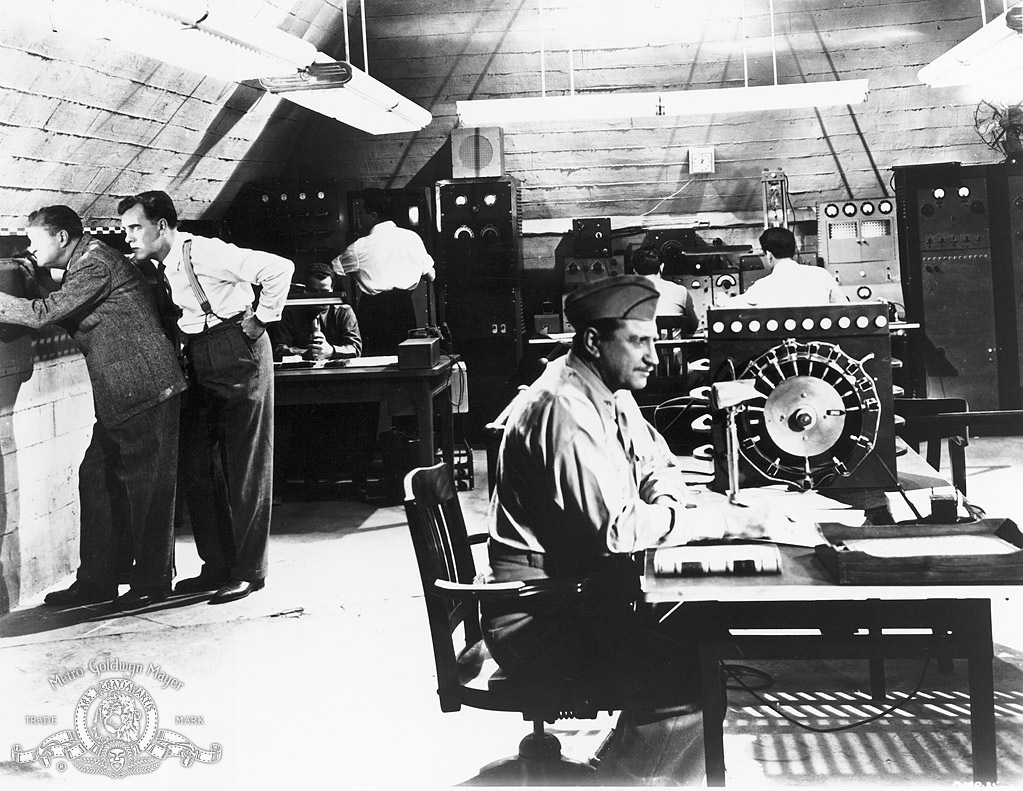Destination Moon
| Year | 1950 |
|---|---|
| Country | USA |
| Tagline | TWO YEARS IN THE MAKING! |
| Director | Irving Pichel |
| Cinematography | Lionel Lindon |
| Scriptwriters | Robert A. HeinleinAlford Van RonkelJames O'Hanlon |
| Produced | George Pal |
| Music | Leith Stevens |
| Art Direction | Ernst FegtéGeorge Sawley |
| Editing | Duke Goldstone |
| Genres | FictionDramaAdventure |
| USA Gross | $5 000 000сборы |
| Release Date | June 27, 1950 |
| Runtime | 92 min. |
Plot Summary
Did You Know?
Based on the based on a science fiction novel by Robert A. Heinlein "Rocket ship Galileo.
In 1947, Robert A. Heinlein wrote the novel "Rocket ship Galileo. As recalled Heinlein, at the same time he had the idea to film fiction. He believed that the shooting of this film can have far-reaching consequences and impact on public opinion in relation to space flight. Originally the writer planned to make a documentary or educational film. In 1948, the writer visited Hollywood and met with Fritz lang. Attempt joint creation failed. Lang was a man with whom it was difficult to find a common language. Then Heinlein was found with screenwriter Alford van Winkelen and then, with another associate producer George PAL. Already had a certain name in the film industry PEL harbored the same intent and the parties agreed to create a script for a feature film.
The idea of the film did not meet with understanding from the major film studios seemed "too fantastic", says Heinlein. In the end, George PAL has found support in a small company of Eagle-Lion Films, where it is produced mainly films category B. the Parties have agreed on a budget of approximately $600 million and is scheduled to begin production around mid-1949. The working title of the movie was "Operation Moon" ("Operation Moon") and "Journey to the Moon" ("journey to the moon"). The creators had to step away from the plot of the book. Heinlein and PEL decided to completely change the concept, removing from future picture of the former historical and social context associated with neo-Nazism, and focus in the script on technocratic and documentary approach. Representatives of the film company was forced several times to alter the script for fear of failure. A lot of effort had to be spent on it to explain to the leadership of the Studio to basic academic concepts (for example, that the moon has no atmosphere) and the related features of the script. With the work the consultants were able to make exceptions out of the picture, the usual at that time, a light musical interlude, which is so insisted the leadership of the Studio, which at one point even decided to remove almost musical. In the end of the book there was only the moon landing and the name of the hero. Heinlein has attached great importance to the accuracy in the technical side of the issue and continually consult with experts in rocketry and astronomy. Even the landing place near crater Harpalus became a subject of discussion. Land with the surface of its natural satellite in the picture is visible in the frame exactly where it should be. George PAL had thoroughly prepared for the shooting, practicing all the technical issues that might arise in the course of production. Phase pre-production was delayed and filming was postponed for a year.
As art Director producer George PAL drew Chesley Bonestell, specializing in astronomical subjects. Illustrations for the book "Conquest of space" in 1949 Bonstelle, was the basis for the storyboard for future paintings. The image of the rocket strongly resembling the V-2 was also taken from this book.
The project consultant in the field of missile technology was a very remarkable man an engineer Hermann Oberth, who had worked with Fritz lang in the film "Woman on the moon". PEL encouraged any creative beginning. Heinlein recalled that he was very comfortable to work with George PAL, because he gave full creative freedom to all with whom he worked, not controlling them in the details.
Deciding that strict for paintings need to diversify, Heinlein and PEL decided to add in a picture of the animation box. It's what woody woodpecker was created by Walter Lantz talks about some of the principles of space flight.
In 1948 began the preparation of decorations, equipment and test shoots. Wanting to minimize risk, George PAL even made a small campaign as some kind of focus groups. A few theaters showed small excerpts taken out of the picture and he watched the reaction of the audience.
After almost a year of preparation period field and pavilion the shooting took place from 14 November 1949 to December 1949.
Producer and Director is constantly addressed to the help of consultants, so that shooting is completely consistent with the plan. The creators had to enter completely new territory and many problems were solved for the first time. As recalled by Robert A. Heinlein, the film actually resembled the real preparation for the flight into space. In order to pass on the event screen in the cockpit of a rocket in zero gravity had to go to the difficulty of creating a special camera mount and operator's workstation, which could be rotated. One of the first creators used the effect which then often has been used in many paintings of space travel the distortion of the faces of the astronauts due to the overload caused by the separation of the missile from the Ground. A similar effect (which is, incidentally, fiction) was transferred to a special make-up and padding over the face.
Another difficulty arose with the suits. Initially, the Director wanted to borrow ammunition from pilots. This garb looked very advantageous and authentic, but it turned out that the fabric of such costumes are delicate and easily torn from contact with the piano strings, which hung from the actors to simulate zero gravity. The artist had to create from scratch the design of the suits, but Irving Pichel got what they wanted: actors dressed in colorful suits and so they became easier to distinguish to the viewer. In heavy, closed spacesuits the actors was hard to move, and they quickly was out of breath and tired. It got to the point that I had to use forced ventilation, and Irving the Piceno quit the habit to smoke on the set. Usually in American films of the time, sound was recorded directly on set, but then had to abandon the usual approach. First, the suits still didn't hear the voice actors
For the filming of the episodes linked to missile decorators had to create a full-size replica of the rocket to a height of approximately 40 meters. Area of the lunar surface where the village of the missile, was completely recreated in the pavilion. Its construction took about two months. The starry sky became a few hundred square meters of velvet stretched on the back and a car light bulb as "stars." For a more realistic creation of crater Harpalus used fresh pictures of the surface of the moon, made at the Palomar Observatory. The crowning work of artist Bonstelle was oil painting with an area of several dozen square meters, depicting the lunar landscape on the back.
In the film George Palu very helpful previous experience working on animated films. In the film a total of about 5 minutes, animated inserts, and only on their training and shooting went the same time as shooting the entire game part of the picture.
After pictures of popular specific, technical jargon ("Houston, we have a problem"), which was used by the characters in the movie.
One of the characters utters a prophetic phrase: "Whoever controls the moon in the future will control the Earth" (whoever controls the moon will control the Earth). The film was predicted many events associated with the incident nineteen years later the real moon landing. Up to the solemn words that followed the first step of man to the moon.






